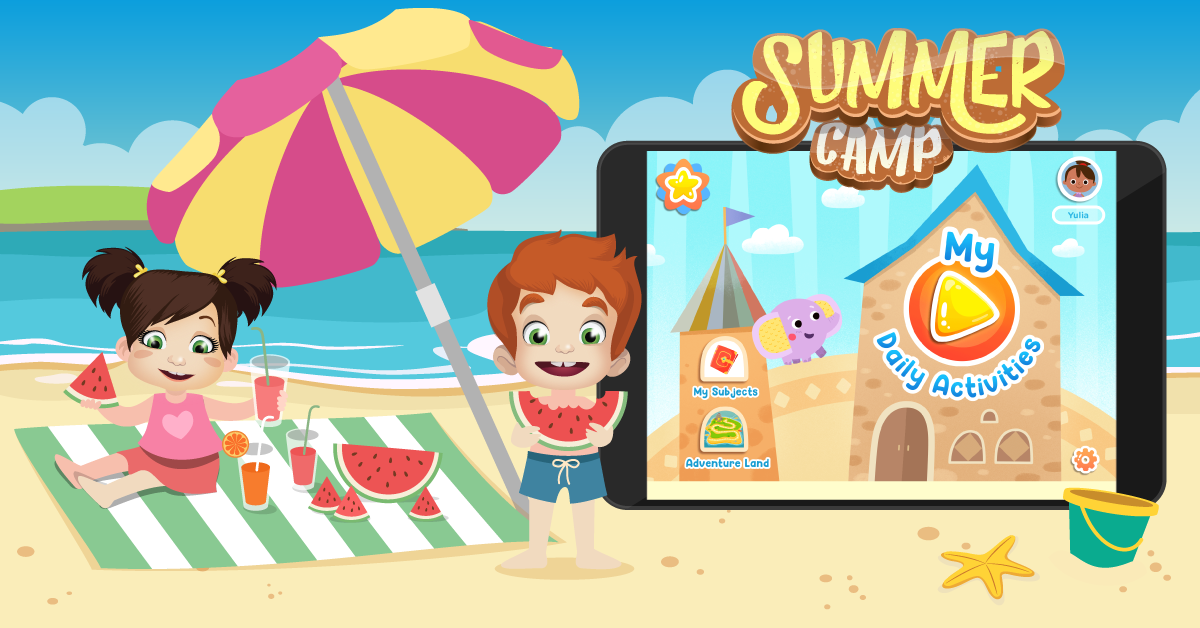Story sequencing Normal Reading Comprehension Worksheets for Ages 6-8
15 filtered results
-
From - To
Enhance your child's reading comprehension skills with our engaging Story Sequencing Worksheets, designed specifically for ages 6-8. These worksheets encourage young learners to visualize and organize events from their favorite stories, improving their understanding of narrative structure. By mastering story sequencing, children develop critical thinking and storytelling skills, fostering a love for reading. Each worksheet features colorful, age-appropriate illustrations and simple instructions, making learning fun and accessible. Ideal for homeschooling or supplemental classroom activities, our resources cultivate creativity and comprehension, empowering kids to connect with texts on a deeper level. Start your child's journey to becoming a confident reader today!


“The Princess and the Pea” and “Cinderella” Worksheet


Robin Hood Folktale Worksheet
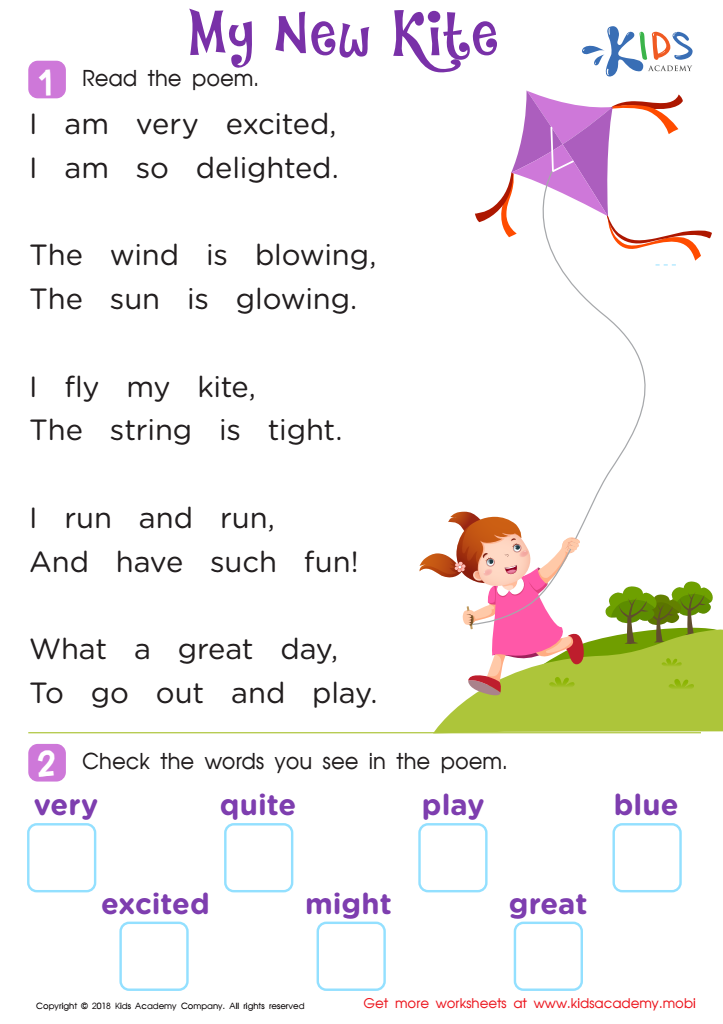

Poem: My New Kite Worksheet
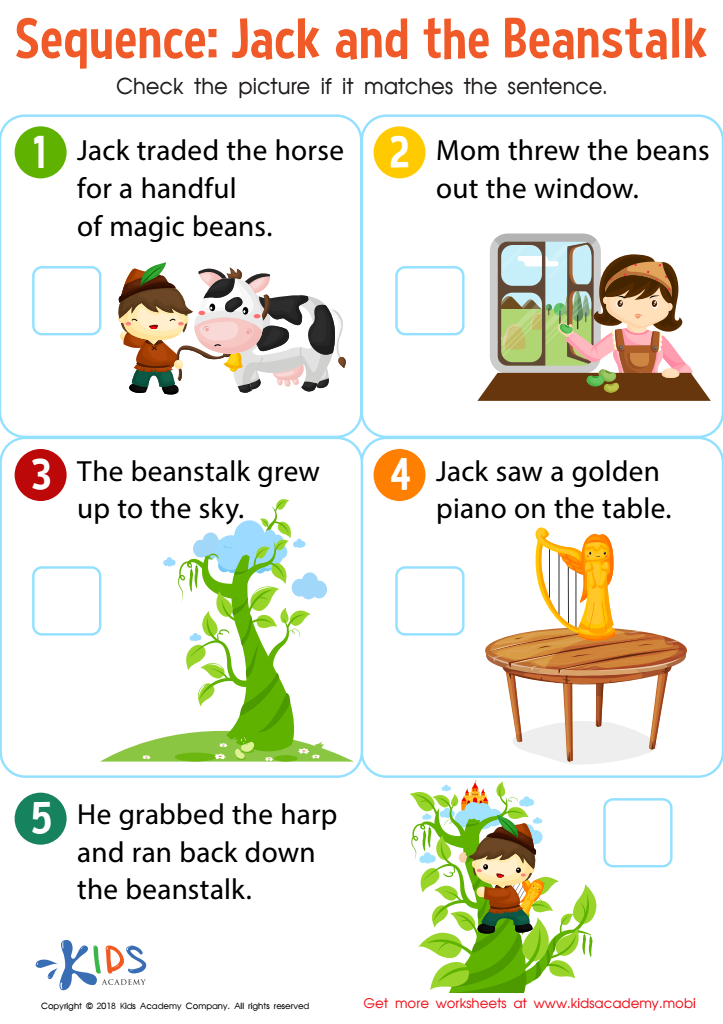

Sequence: Jack and The Beanstalk Worksheet
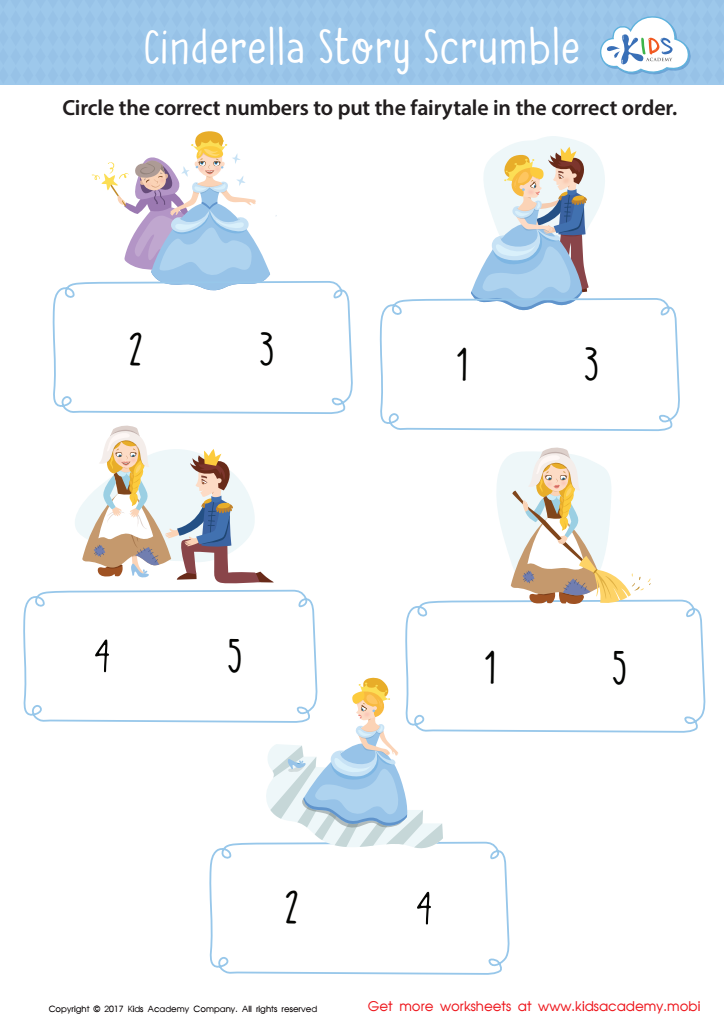

Cinderella Story Sequencing Worksheet
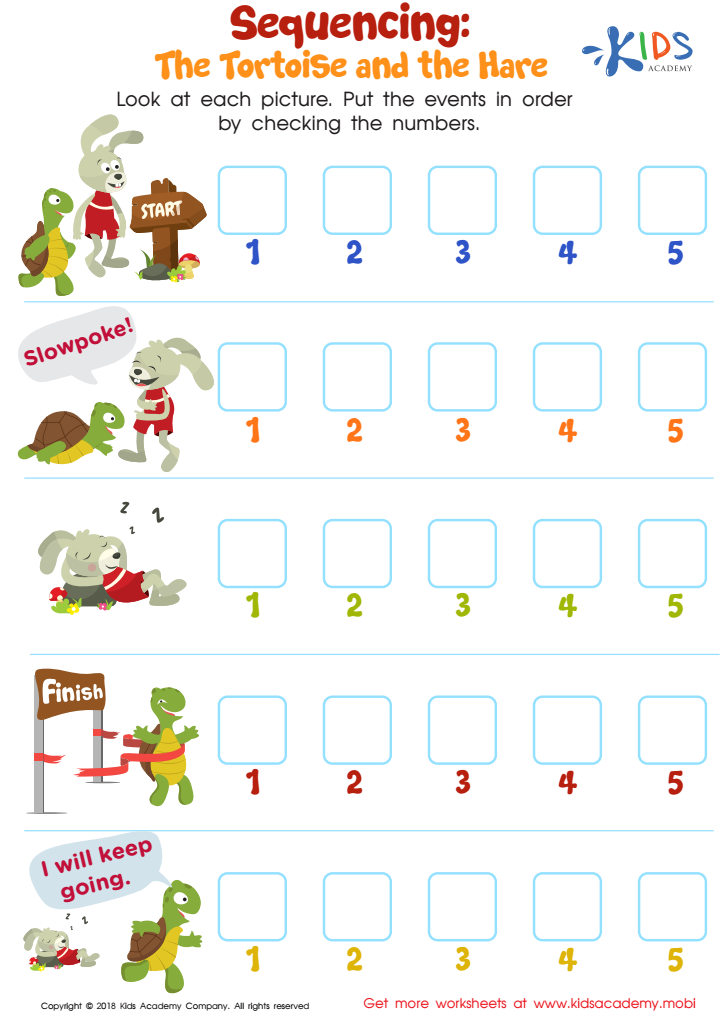

Sequencing: The Tortoise and the Hare Worksheet
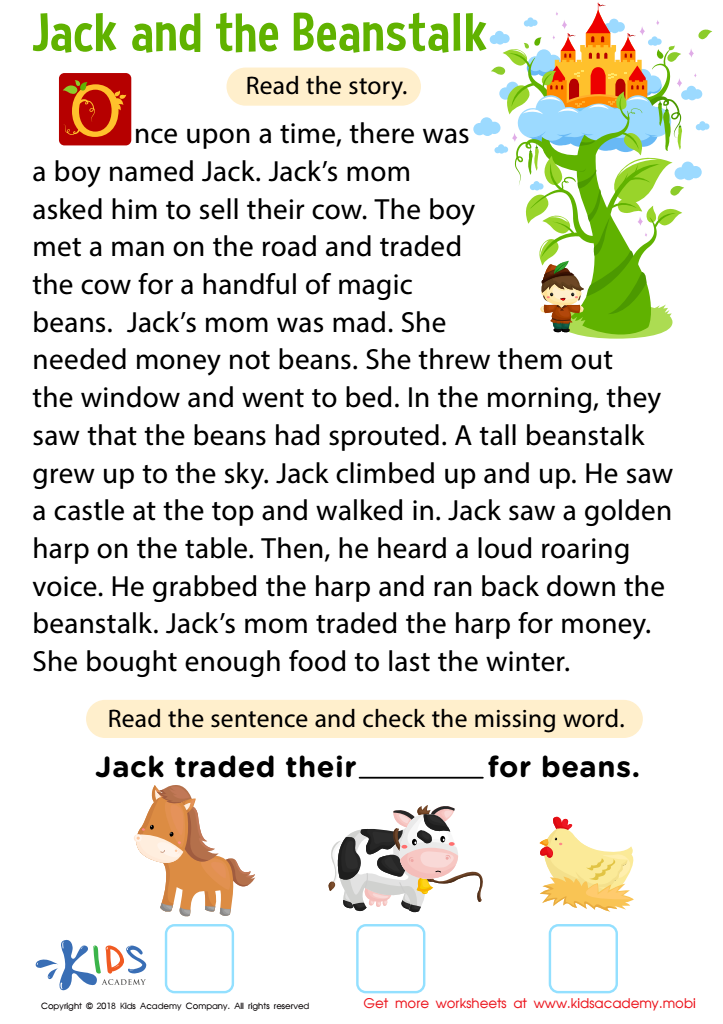

Jack and Beanstalk Worksheet
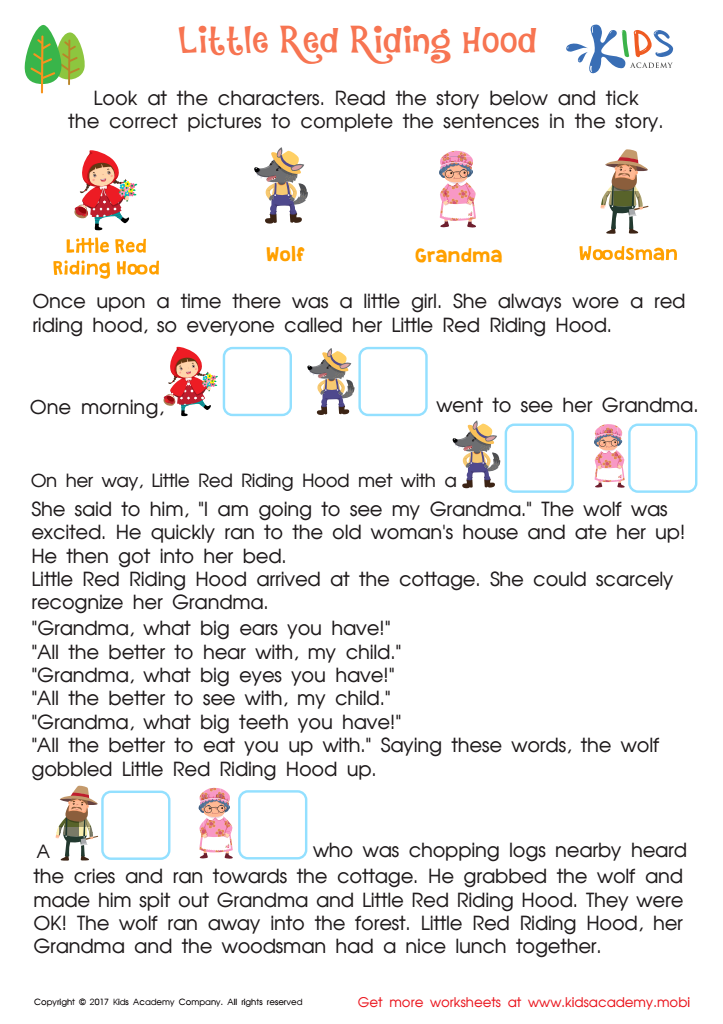

Little Red Riding Hood Printable


Cinderella: Beginning, Middle and End Worksheet
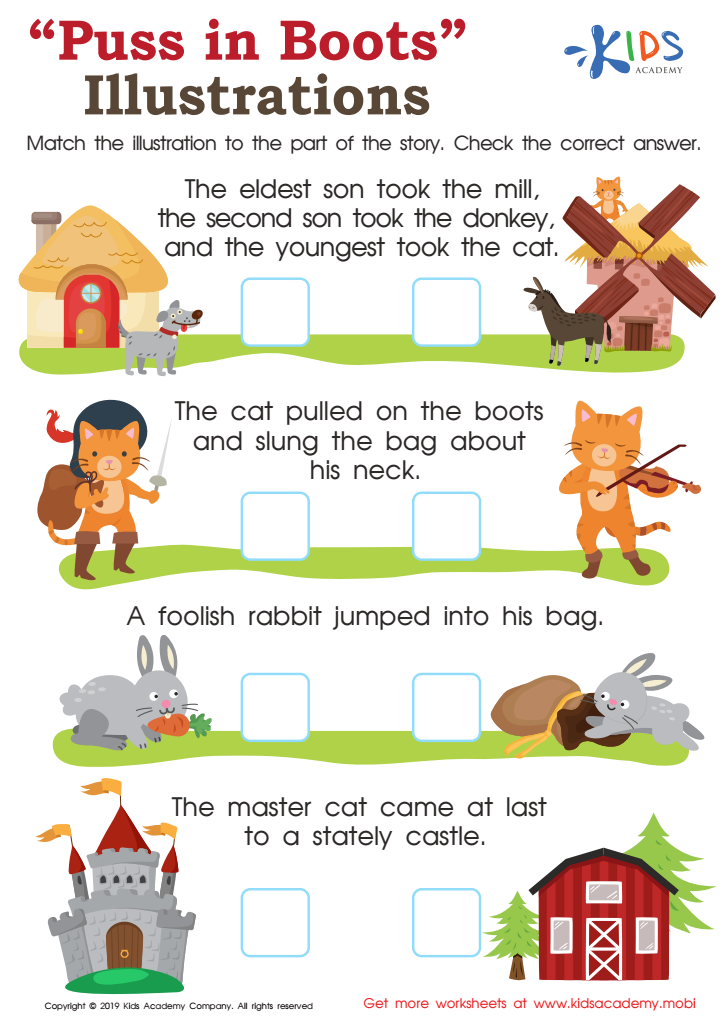

Puss in Boots Illustrations Worksheet
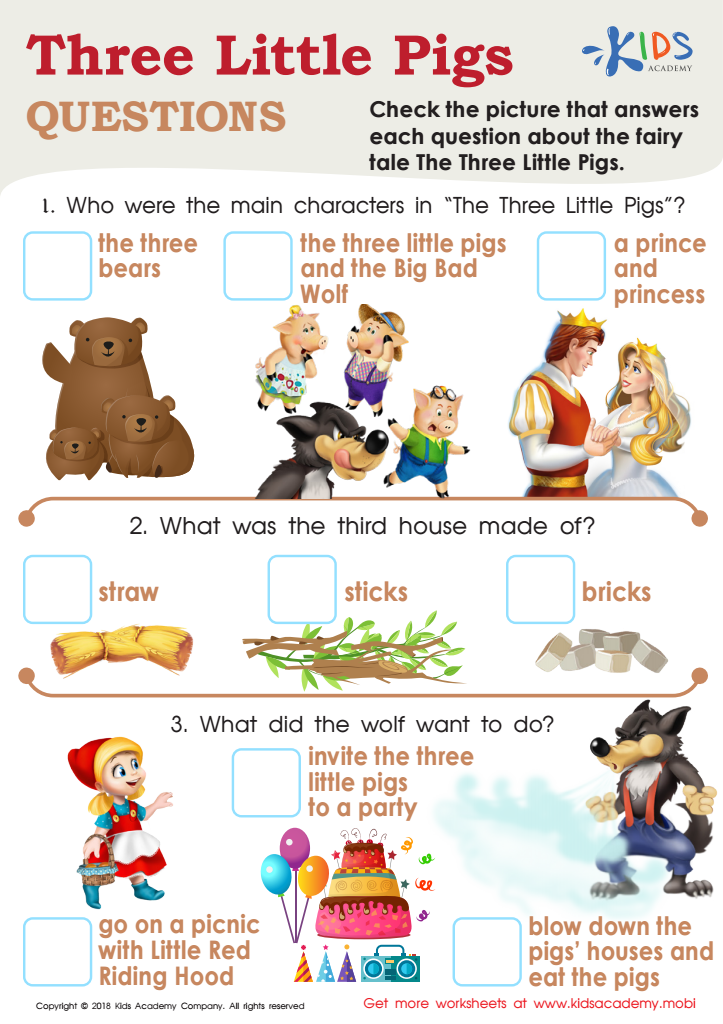

Three Little Pigs Questions Worksheet
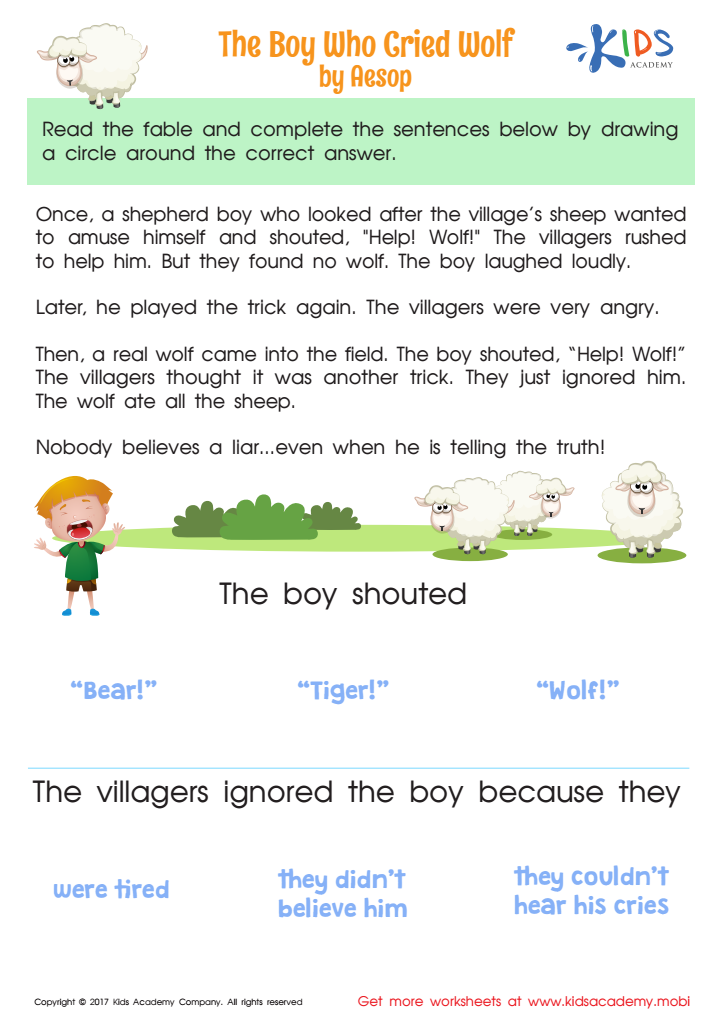

The Boy Who Cried Wolf Worksheet
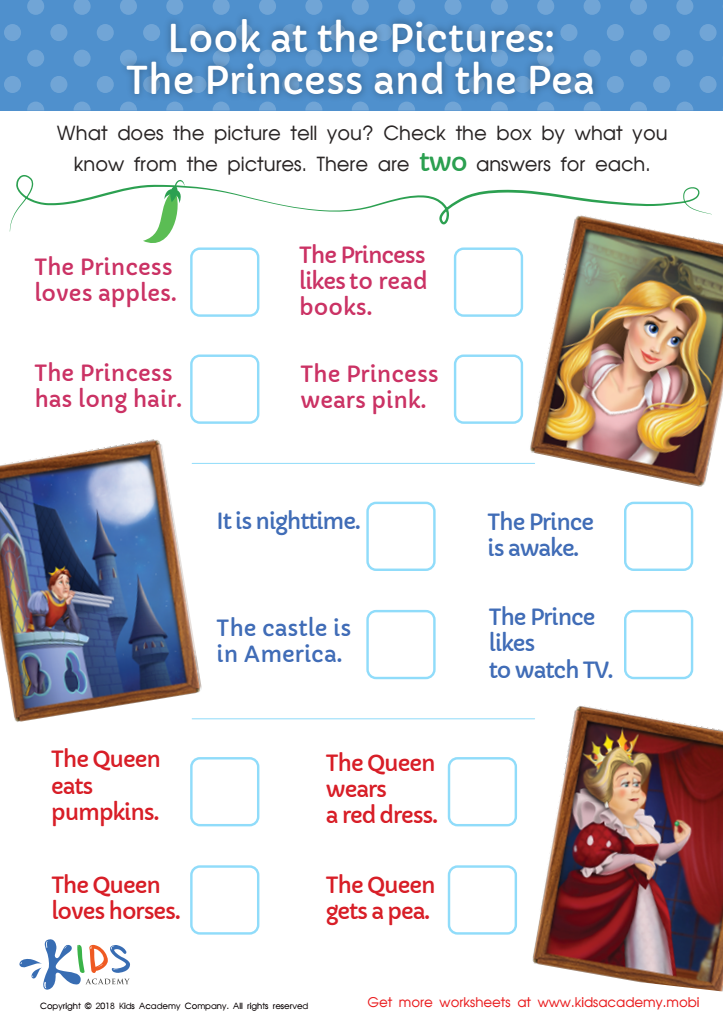

Look at the Pictures: The Princess and the Pea Worksheet
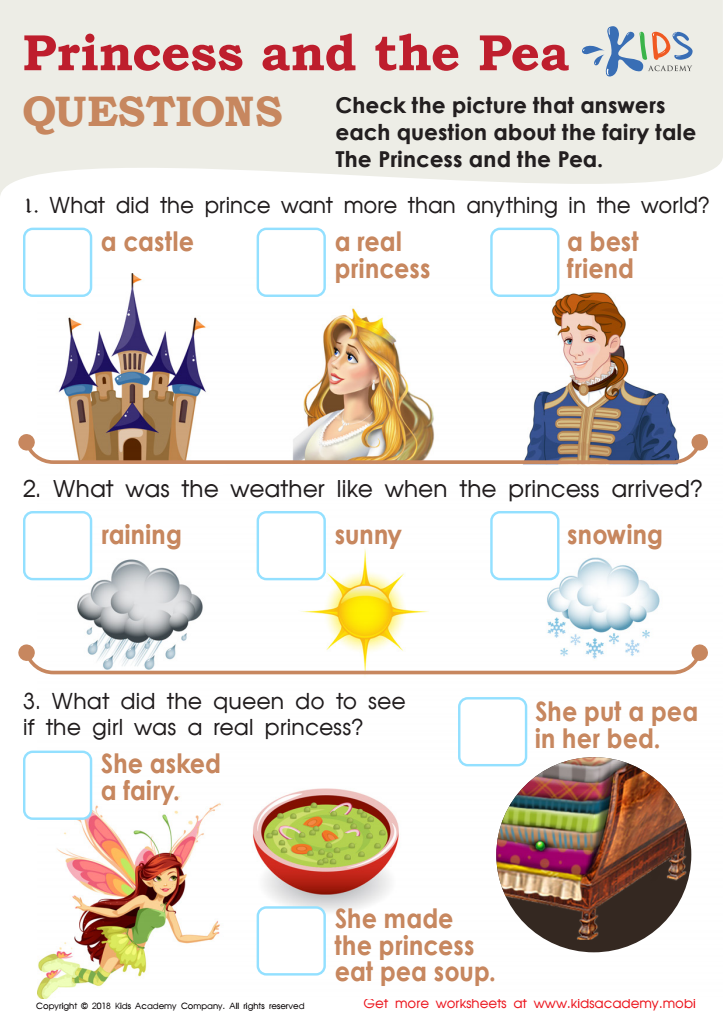

Princess and the Pea Questions Worksheet


The Boy Who Cried Wolf Part 2 Worksheet
Story sequencing is a crucial foundational skill in reading comprehension for children aged 6-8. At this stage, children are beginning to read independently and can benefit greatly from understanding the order of events in a story. Knowing how to sequence a narrative helps young readers grasp the meaning and flow of a tale, fostering a deeper understanding of the plot, characters, and overall themes.
Parents and teachers should care about story sequencing because it enhances cognitive development and critical thinking skills. As children learn to identify the beginning, middle, and end of a story, they develop analytical thinking, which easily transfers to other subjects, including math and science. Additionally, strong sequencing skills improve vocabulary and language proficiency, enriching a child's ability to express themselves both verbally and in writing.
Moreover, comprehending story structure supports emotional intelligence. Children who understand stories can better empathize with characters and situations, thus enhancing their emotional awareness and social skills. Encouraging story sequencing in engaging ways—such as through retelling stories, using visual aids, or interactive activities—can make learning enjoyable and effective. Ultimately, fostering strong reading comprehension at this age sets a solid foundation for lifelong learning and literacy skills.
 Assign to My Students
Assign to My Students






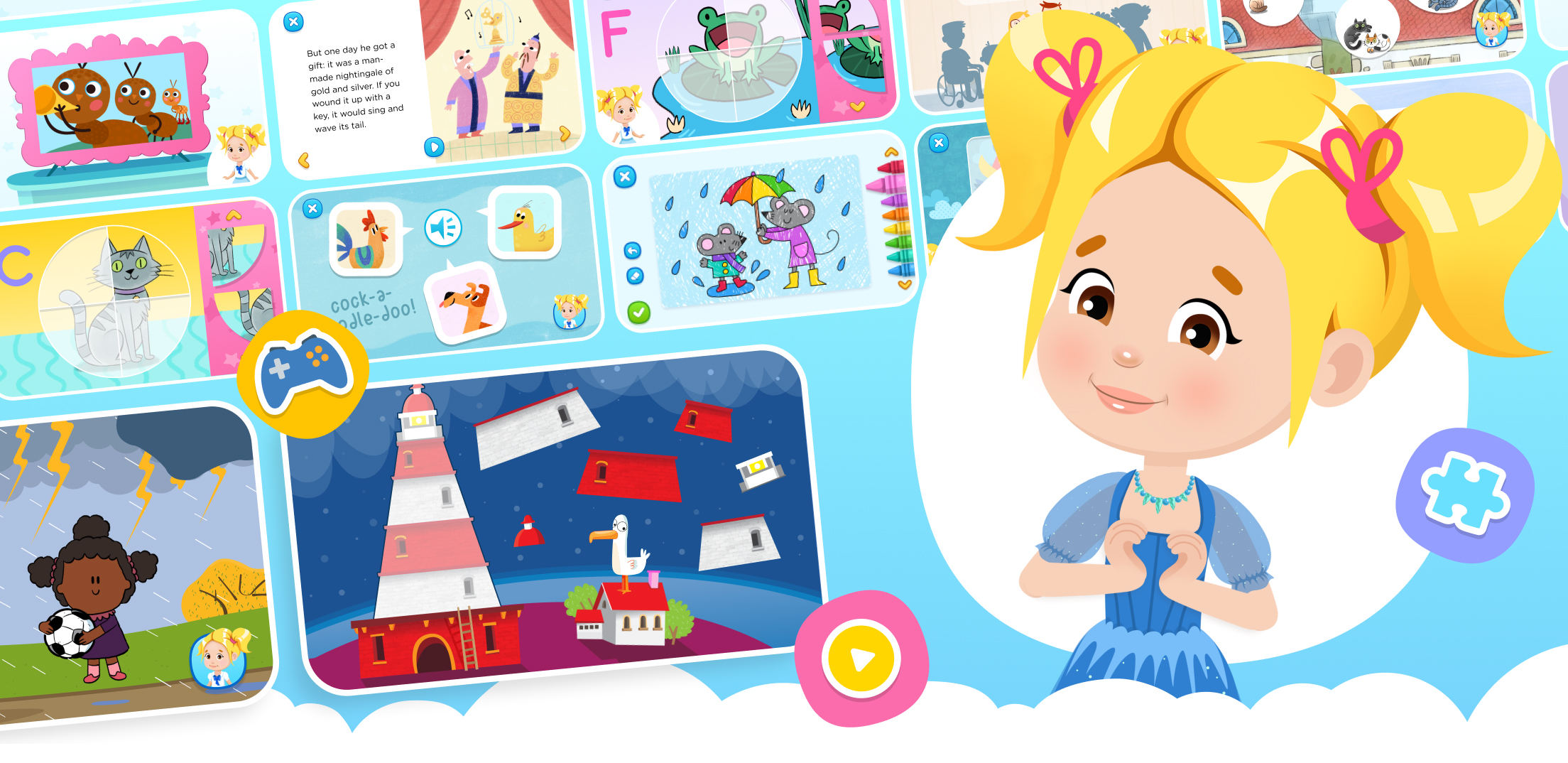
.jpg)



